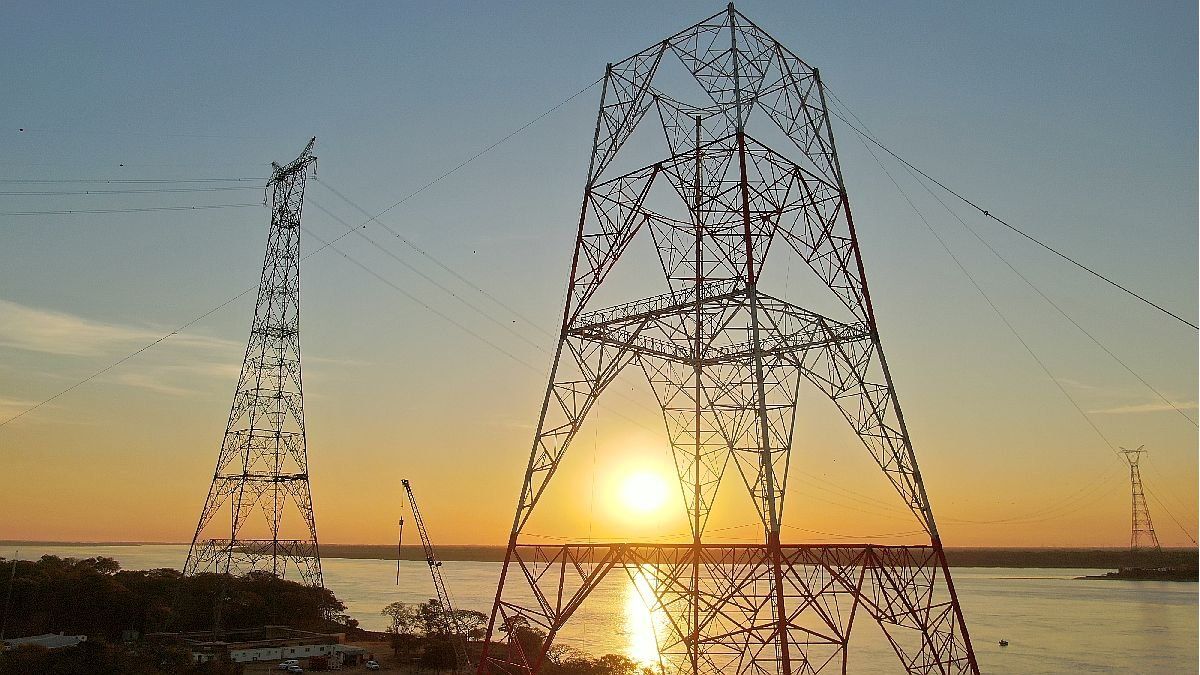“The gas situation in Europe is going from a ‘bad’ scenario to an ‘ugly’ scenario in the last month”warned yesterday a report prepared by Bank of America.
According to this entity, Russia – the largest single supplier of energy in Europe – is “playing” with gas as a geopolitical weapon.
The Russian energy giant Gazprom reduced by 31% its gas exports to countries not belonging to the post-Soviet Commonwealth of Independent States (CIS), among them the Europeans, according to figures from the last six months, which account for the changes caused by the invasion, with a redirection of supply to China and India.
Gazprom It also cut flows from the Nord Stream gas pipeline, which links Russia and Germany across the Baltic Sea, to just 20% in July, a week after it cut them completely for a 10-day maintenance period.
This fall in the volume of gas threatens to further raise energy prices and increase inflation, a few months before Europe begins to demand more supply due to the onset of cold weather.
To avoid a shortage of gas in the boreal winter, various European nations began planning to ration supplies of this fuel and also launched various measures to save energy.
The last country to switch to energy economy mode was Spain, which yesterday adopted “an energy saving and management plan” to moderate air conditioning and heating in shops, cultural buildings and transport stations.
“In these properties, the heating must be maintained in winter at a maximum of 19 degrees and in summer at a minimum of 27 degrees Celsius,” the head for the Ecological Transition announced this Monday at a press conference.Teresa Ribera, after a council of ministers.
The measures, already implemented since May for public dependencies and that will take effect in a week, understand that heMonuments and business windows turn off their lights at 10 p.m., while the automatic closing of doors in air-conditioned spaces will be required and teleworking will be encouraged to “save on travel and thermal consumption of buildings”detailed the minister, according to the news agency AFP.
“Saving energy is everyone’s task and is a priority”said the President of the Spanish Government, the socialist Pedro Sánchez, who stated that reducing the energy bill contributes “to reducing dependence on the aggressor (Vladimir) Putin”.
France is also preparing a savings plan that aims to reduce the energy consumed -natural gas, electricity and fuel- in the next two years by 10% compared to 2019.
“We must prepare for a scenario in which we all live without Russian gas”French President Emmanuel Macron said in mid-July, calling for a “logic of sobriety.”
Although the strategy is still under development, the Government urged families and companies to make “small gestures” and disconnect energy devices while they are not in use or turn off the light in empty rooms.
A policy promoted this week within the public administration by the Prime Minister, Élisabeth Borne, who sent an internal circular to implement “without delay” all the measures that allow “reducing energy consumption and accelerating the end of fossil fuels”, such as limiting the use of air conditioning and heating or encouraging the use of “sustainable” transportation for staff, among others.
Paris, meanwhile, enacted last month a municipal ordinance that prohibits air-conditioned premises from having their doors open under threat of a fine, an initiative already implemented by other cities such as Lyon.
Also, the supermarket and shopping center sector agreed on a protocol that provides for turning off the illuminated signs after closingSystematize the lowering of light intensity before the arrival of the public and reduce the lighting of the sales area when possible.
Similar measures were also launched in Germany, one of the European countries most dependent on Russian gas.
“No possibility can be excluded,” warned Economy Minister Robert Habeck, who argued that Moscow is using “the gas weapon” against Europe.
In this situation, The Government seeks to save as much gas as possible to reach the fall with deposits at 90% of their capacity.
“Given the scarcity of supply, it is necessary to reduce demand,” said Habeck, stating that “rationing” is inevitable.
In mid-July, the German lower house adopted an internal energy saving plan for the winter, that limits heating to 20 degrees in the building and prohibits the use of water heaters, while the Government issued a series of recommendations to the population such as turning off lights, taking short showers or using the bicycle instead of the car.
The territories also launched various measures: Berlin decided to turn off the lights of its monuments, as did the northern Hannover, which also cut heating and hot water in public buildings, swimming pools and gyms until September.
Meanwhile, in southern Augsburg, the municipality decreed to turn off the traffic lights and a large part of the public lighting during the night.
Faced with impending shortages, the German government authorized in mid-July that coal-fired power plants (type of coal) of the so-called network reserve to work again to save natural gasreported the DPA news agency.
The decree allows the sale of electricity from reserve power plants fueled by coal or oil until the end of April 2023, in order to force natural gas out of the electricity market.
In addition to this directive, one is also being prepared for the resumption of the lignite plants that were going to close definitively at the beginning of October.
All of these policies are part of the EU’s efforts to limit imports of Russian gas.
In reaction to the war in Ukraine, the European Commission presented in May a plan for some US $ 214,000 million that foresees an acceleration of the transition towards renewable energies and energy savings to free “as quickly as possible” from imports Russian gas.
Last week, the 27 Member States also adopted a plan committing themselves to doing “everything possible” to reduce their gas consumption by at least 15% between August 2022 and March 2023, compared to the average of the last five years of the same period.
Source: Ambito
David William is a talented author who has made a name for himself in the world of writing. He is a professional author who writes on a wide range of topics, from general interest to opinion news. David is currently working as a writer at 24 hours worlds where he brings his unique perspective and in-depth research to his articles, making them both informative and engaging.




